This Friday meet Jeff and Jeffery Garland of Papa G’s Organic Hemp Farm in Crawford County, Indiana. The farm was officially started in time for the 2020 growing season when Jeff and Jeffery drove their initial mother plants from Colorado to Indiana and started planting in Jeff’s former vegetable field outside his house.
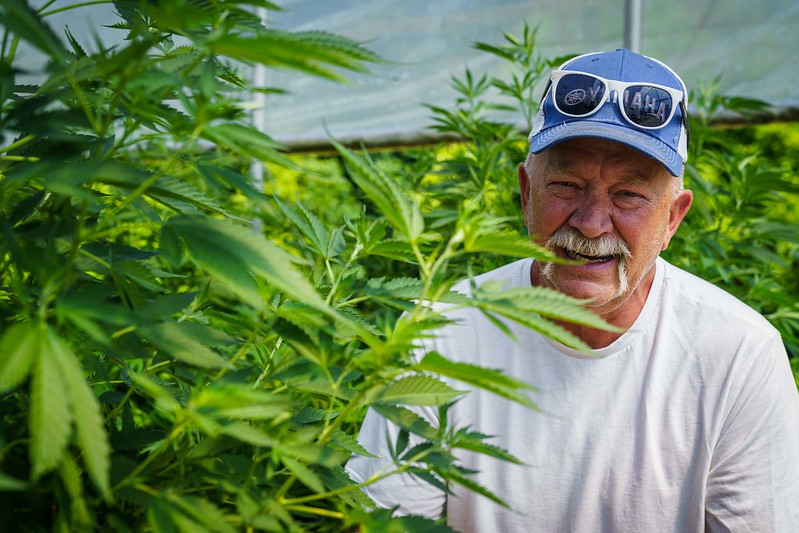
A Radical Idea
Jeffery had spent years living in Los Angeles and then Colorado building a successful content creation business. Then, like so many others, his life came to a screeching halt in March 2020. So, he picked up the phone, called his dad, Jeff, and pitched him on a radical idea.
“I said, ‘Dad, have you ever thought about maybe growing hemp?’” Jeffery recalled.
Jeff had grown corn, soybeans, and hay on a farm in Noblesville, Indiana, for years before moving south to a 200-acre farm he owned in Crawford County. He was considering selling the farm before Jeffery called and suggested they start growing hemp.
Hemp had been legalized federally, Indiana had just started issuing growing licenses, and from his time living in Colorado and developing content for a major hemp producer, Jeffery had built contacts he could lean on to get them started.
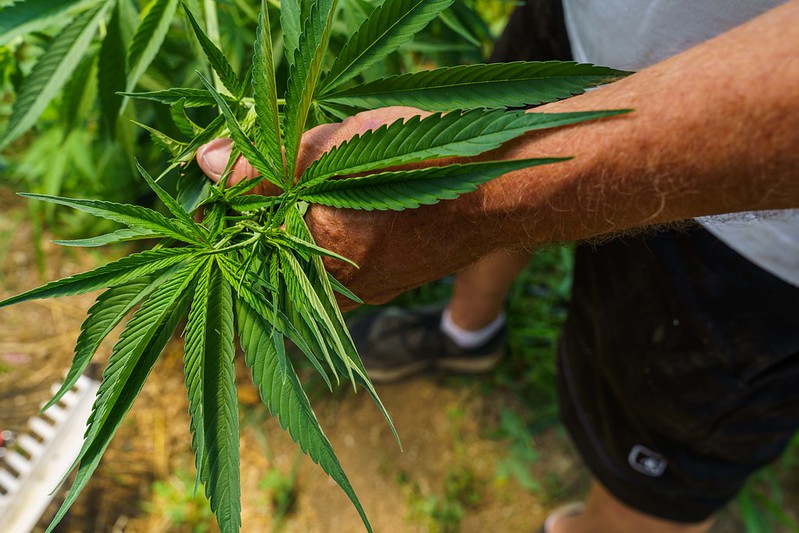
Outwardly, the cannabis plants used to produce hemp oil are nearly identical to those used to produce marijuana, what differs is the internal chemistry. While marijuana plants are bred to produce the maximum amount of the psychoactive compound THC, hemp plants can be bred to maximize the non-psychoactive compound CBD, which is known for its medicinal uses, and can also be bred for fiber and grain products.. Cannabis plants are required to remain below .3% THC to be considered hemp. Any higher levels and it is considered to be marijuana. The strict regulation creates a constant balancing act for growers such as the Garlands to maximize the lifespan of their crop while keeping it from going “hot.”
Extending the Growing Season
That first season they grew a small portion in Jeff’s existing high tunnel but most of their crop was cultivated in an open field which gave them very little control. At the end of the season, they tested the quality of the plants and the ones grown in the high tunnel had well-outperformed the ones in the field. They had grown longer and larger, which led to more oil being produced, and the oil itself was a better quality.
With that data in hand, they began looking for ways to add an additional high tunnel prior to their second growing season. That search led them to USDA’s Natural Resources Conservation Service (NRCS) and the Environmental Quality Incentives Program (EQIP). Jeff already had a preexisting relationship with USDA from enrolling 81 acres of the property surrounding his house into the Conservation Reserve Program (CRP) through the Farm Service Agency.
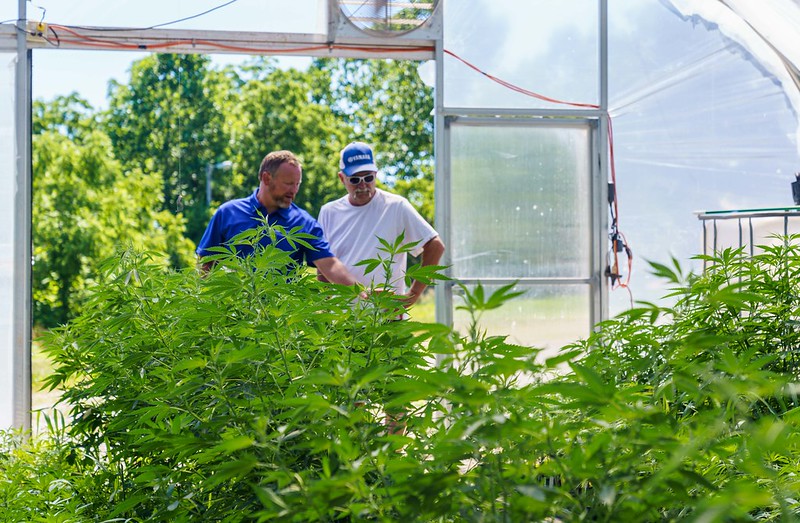
They applied for an EQIP contract in 2021 and were approved with construction on the tunnel slated to take place in time for the 2022 growing season.
“We'll have to pull early (in the field). Two to three weeks earlier in the field than we do in a high tunnel,” Jeff said. “When you let them go longer, you're going to produce more oil. It's important to have that high tunnel.”
Because of the ability to control the growing environment for their plants, the high tunnels enable the Garlands to extend their season by multiple weeks on both sides. It a major part of turning their hemp operation into a truly year-round operation.
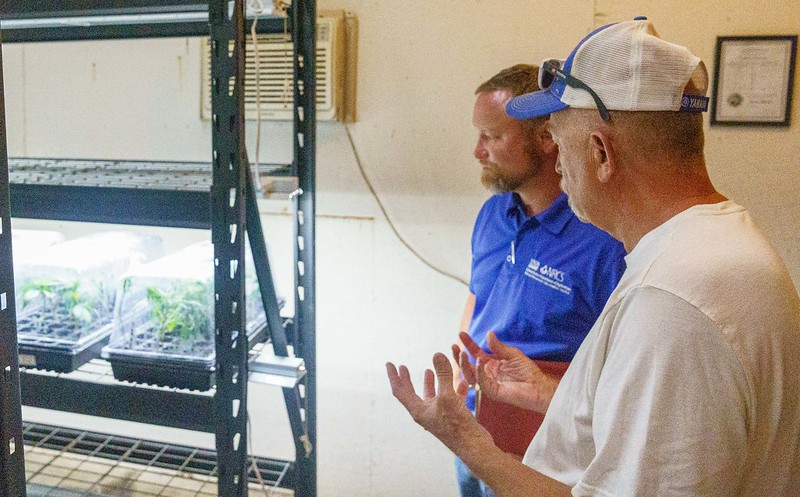
Improving Crop Quality
As the plants are going through their propagation and then growing cycle, the Garlands are constantly working to make sure they stay within acceptable limits in terms of internal chemistry and not getting stressed to the point where they start pollinating. A major factor in that is controlling the inputs the plants receive and ensuring they have the nutrients they need to survive and flourish.
“It all starts with the soil,” Jeffery said. “If you don't have good soil, you're not going to have good plants and then you're not going to have the best oil. So, we really put lots and lots of organic matter back into our soil.”
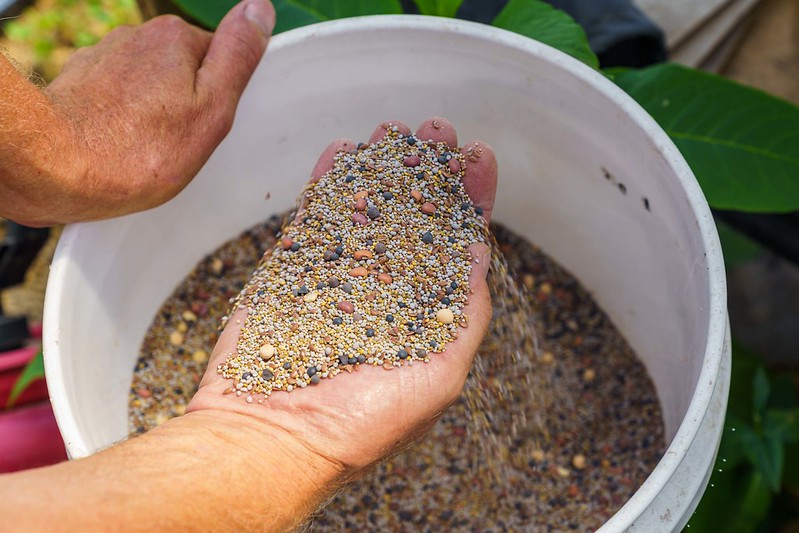
Although they had already introduced multiple forms of compost and fertilizer to build the soil organic matter, the Garlands wanted to go further so they turned to NRCS for technical advice and worked with their local district conservationist Lee Schnell to develop a cover crop plan. They came up with a diverse mix, which the Garlands added to, creating a 17 species mix in all.
On a hot summer day a few months after transplanting their new varieties, the air at the farm is thick with the scent of growing cannabis plants, which are well on their well to reaching their maximum height of over six feet tall. In time, the plants will be dried and taken for processing where they'll be turned into salves, tinctures, gel tablets and more. It is all part of their commitment to making the best products possible to help people.
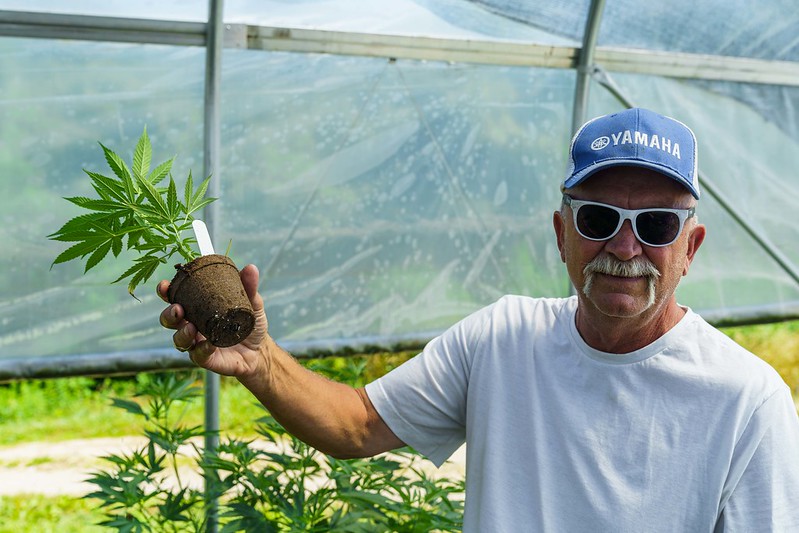
More Information
Visit local farms, ranches, forests, and resource areas through our Fridays on the Farm stories. Meet farmers, producers, and landowners who are working to improve their operations with USDA programs.
USDA offers a variety of risk management, disaster assistance, loan, and conservation programs to help producers weather ups and downs in the market and recover from natural disasters as well as invest in improvements to their operations. Learn about additional programs.
For more information about USDA programs and services, contact your local USDA service center.
Brandon O’Connor is a public affairs specialist with USDA’s Farm Production and Conservation Business Center. For additional information, see the full story published by NRCS Indiana.


